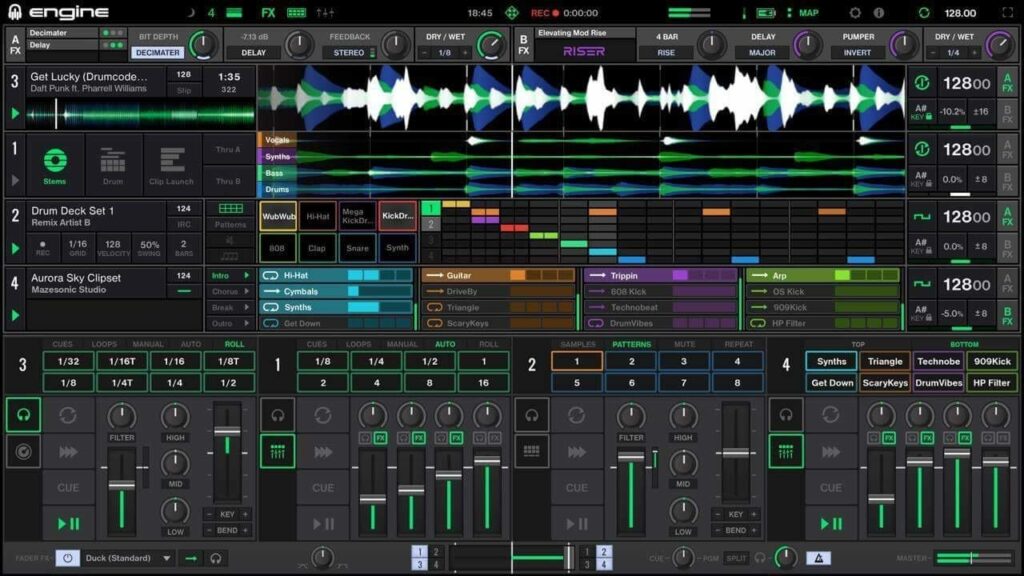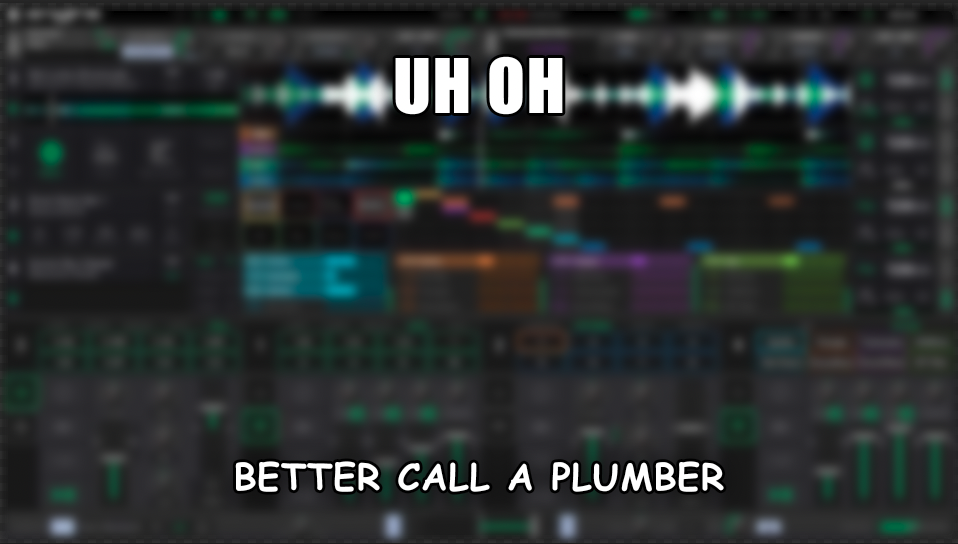The other day, a post with a screenshot mysteriously appeared on the official Denon DJ Facebook group, purportedly showing a screenshot of Denon DJ’s Engine DJ library management software, but as a full blown performance interface like Traktor or… Serato..?

Is it real?
There’s no way to know if this specific screenshot is genuine, but I can say that several of our sources confirm this is very similar to the software they saw several years ago. And if it’s real, it could be some of the biggest news in the DJ tech world for a very long time.
As of writing, I’ve reached out to people at inMusic directly to find out the validity of the image, but not received a comment. We would always endeavour to get both sides of a story like this, and any reply will either be added, or possibly followed up with another article. From what we can tell, it’s pretty clear that the software does absolutely exist in some form over at inMusic HQ.
Why hold it back?
You may or may not be aware of the offer AlphaTheta Corp made to buy Serato a while ago. This has been in consultation for six months now, with the anti-monopoly governing bodies from several countries getting involved, asking for public feedback on the deal.
One of the most vocal opponents to the deal is inMusic, the parent company of basically every music production and DJ gear brand you used to love back in the day. The company is a massive corporation which owns Denon DJ, Rane, Stanton Magnetics, Numark, now Moog, and well, anything else you can think of that isn’t Pioneer DJ, Native Instruments, Allen & Heath, Reloop, or a boutique brand.
Outside of the Denon DJ standalone products which use embedded EngineOS to handle the user experience, inMusic’s controller products are deeply entrenched in the Serato ecosystem, having been designed from the ground up as a partner to the software.
As things stand, inMusic claims a deal to merge Pioneer DJ and Serato would be monopolistic and unfair for their brands that rely on Serato when a competitor owns them.
The revelation that there’s actually a working version of Engine DJ performance mode would put some serious dampeners on inMusic’s claims that they would suffer from the AT/Serato team up. If they could roll out an app at any time, it would be fairly trivial [for them] to use their supply network and digital platforms to spread it as a replacement for all existing controllers. And they’d probably save a good wedge of cash bringing it in-house, especially if they already have it sat there.
But it would have to be very well cooked, because people don’t like to switch. (In fact, we have a whole other article about that in the pipeline.)
What does the screenshot tell us?
Even beyond the implications to the wider industry, there’s a lot to unpack in the image. On the face of it, the UI does look fairly straightforward, with your global controls and effects at the top, transport and mixer controls at the bottom, and track decks in the middle. What’s interesting is how it takes design cues from all over. The global and effects sections have lineage from both Traktor (the two deck effects), and Algoriddim’s djay (which, to be fair, has won numerous design awards) for the header bar. The decks and transport also have a lot of VDJ and djay mixed together.

But by the Force, there’s a lot going on. We can see there are four different deck types, with a normal track deck, audio separation deck, a drum rack and sequencer deck, as well as some sort of looper deck. These might all be features that exist already, but to my knowledge, they haven’t been collected in one place, nor seemingly implemented like this.

I’ll ignore the track deck, which does look fairly standard. The stem separation deck also looks pretty much how others do it, but I don’t think it needs to change.
What’s unique with the ‘drum’ deck is the implementation of a timeline based drum sequencer, which looks like a fully fledged step sequencer, akin to what Maschine or Ableton Live have. djay does have a sampler built in, which can record drum sequences as you play them, quantised to the global tempo, but it’s not editable other than by overdubbing. an actual step sequencer is closer to what Traktor tried to do many years ago, harnessing the workflow of the Kontrol F1.
Finally, there’s the ‘clip launch’ deck, which appears to look similar to djay’s looper, or perhaps even Traktor’s remix deck, has a set of short clips that either loop or one-shot.

Overall, it does feel like he software would try to offer something more than the standard four decks and effects. There are still a lot of questions about what else it can offer.
Does it have DVS?
Will it work with any controller or just their own hardware?
Does it have MIDI mapping functionality?
Do the new features have specialist controllers?
How much is it going to cost?
Does it have a subscription?
If inMusic really wanted to disrupt the industry and throw a spanner in the works, it could offer this out for free, with premium features unlocked via their hardware, or an additional fee. (Sorry for giving them ideas!)
It’s a shit sandwich, we just get to choose ketchup or mayo
Make no mistake, if inMusic could, they would buy Serato. In fact, it could be argued that as it stands, inMusic would benefit more from owning Serato than AlphaTheta, who already have a fully fledged, well liked, and used DJ platform for controllers and media players.
But it doesn’t really matter who ends up owning Serato as a business. It all leads to the same problem: hegemony in the DJ technology industry. Whether AlphaTheta, inMusic, or some investment company makes the purchase, it’s the DJ community that will suffer, if anyone. If one of the big corporations end up controlling the DJ software with the biggest market share, it doesn’t matter if it’s technically a monopoly or not, there’s less competition, less innovation, and less desire to keep prices down. This is what’s known as enshittification.
If Serato ends up in the hands of an investment firm (as it could very well be if they fail to sell to AT), then every business decision will be made to maximise profit and company value above all else, leading down the road to… enshittification.
So whatever happens, we the users are faced with less choice, and likely more cost. But the addition of Engine DJ as an option for us would redress the balance, ever so slightly.
Over to you
How do you feel about the sale of Serato? Are you excited about the idea of a performance mode for Engine DJ?
